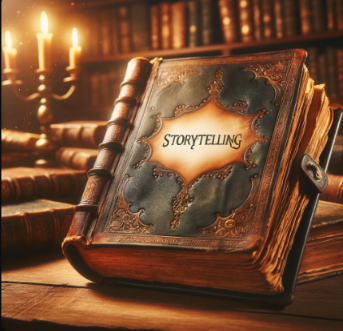
In the vast tapestry of human experience, storytelling has always served as a crucial thread, binding generations through shared narratives. These narratives, whether spoken through the lips of ancient bards or penned by contemporary authors, are not merely entertainments or idle pastimes; they are fundamental to our development and understanding of the world. This form of communication, which has evolved from oral traditions to the written word, and now to digital media, plays an essential role in shaping our perception of reality, influencing everything from our personal identities to our cultural norms.
Storytelling is an innately human trait. From a young age, we are drawn to the rhythms of stories told by our parents, the tales read from well-thumbed books, or the dramatic arcs of movies and television shows. This affinity is not coincidental but is wired into our psychology. Stories help us navigate life’s complex social environments by providing frameworks that resonate with universal themes—love, conflict, adventure, tragedy—that are easily recognizable and relatable. Through these frameworks, we find ways to connect with others, share experiences, and learn from the imagined realities of different characters and worlds.
Moreover, stories are tools of empathy. As we immerse ourselves in the lives of fictional characters or historical figures, we gain insights into perspectives unlike our own. This vicarious experience broadens our worldview and can soften prejudices, opening our minds to new ways of thinking and being. In a world increasingly polarized, the ability of stories to transport us into the minds and hearts of others is more valuable than ever. They enable us to live countless lives, confront our fears, and aspire to greater heights—all from the safety of our imagination.
In the realm of education, storytelling proves to be an effective pedagogical tool, transforming abstract concepts into memorable and engaging lessons. History teachers use stories to bring the past to life, making dusty dates and figures resonate with human emotion and agency. Science educators narrate the discovery of laws and phenomena as quests for knowledge, filled with trials and triumphs, which can inspire students to pursue their investigations. In every case, stories make learning a richer and more accessible experience, appealing to both the intellect and the emotions of students.
Furthermore, the digital age has transformed the way stories are told and consumed. The advent of the internet, smartphones, and social media has given rise to new storytelling platforms and formats. Blogs, vlogs, podcasts, and tweets allow anyone with an internet connection to share their narrative with a global audience. These digital stories, often personal and direct, create a sense of immediacy and intimacy that traditional media cannot match. They also foster a participatory culture where listeners, viewers, and readers can respond to, modify, or remix narratives, actively engaging in the storytelling process.
This democratization of storytelling has its challenges, though. The sheer volume of stories available at our fingertips can overwhelm our capacity to discern quality content from misinformation. The rapid spread of narratives through social media can also distort facts, sometimes leading to the dissemination of “viral” misinformation. Thus, in the digital era, being a critical consumer of stories is as important as appreciating them. It necessitates a new kind of literacy, one that includes not only reading and interpreting but also critically evaluating the sources and intentions behind the narratives we consume.
Despite these challenges, the essential nature of storytelling remains unchanged. At its core, storytelling is about connection—connecting ideas, individuals, and cultures. It allows us to cross geographical and temporal boundaries, linking us to both the past and the future. As we navigate the complexities of the 21st century, the stories we choose to tell and listen to will shape the contours of our culture and the identity of our global community.
In conclusion, storytelling is not merely a method of entertainment; it is a vital component of human existence. It educates, entertains, preserves our history, and, most importantly, fosters empathy among us. As we continue to evolve and adapt to new technological landscapes, the fundamental human need for stories—to make sense of the world and our place within it—remains as significant as ever. Thus, embracing the art of storytelling is embracing a tool for personal and collective understanding, a tool that is indispensable in the quest for a more connected and empathetic world.